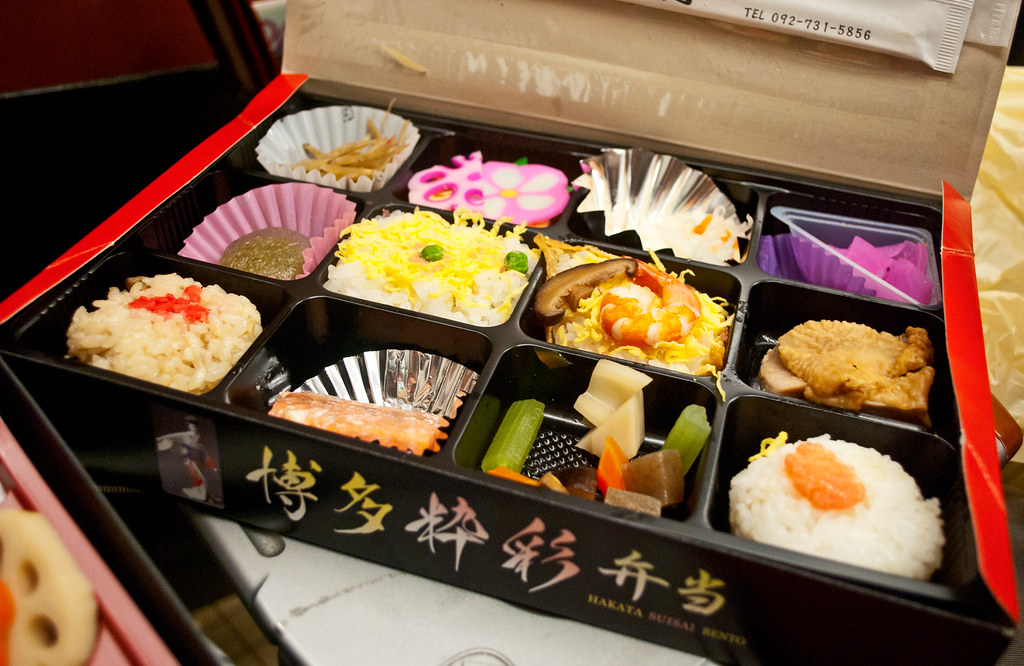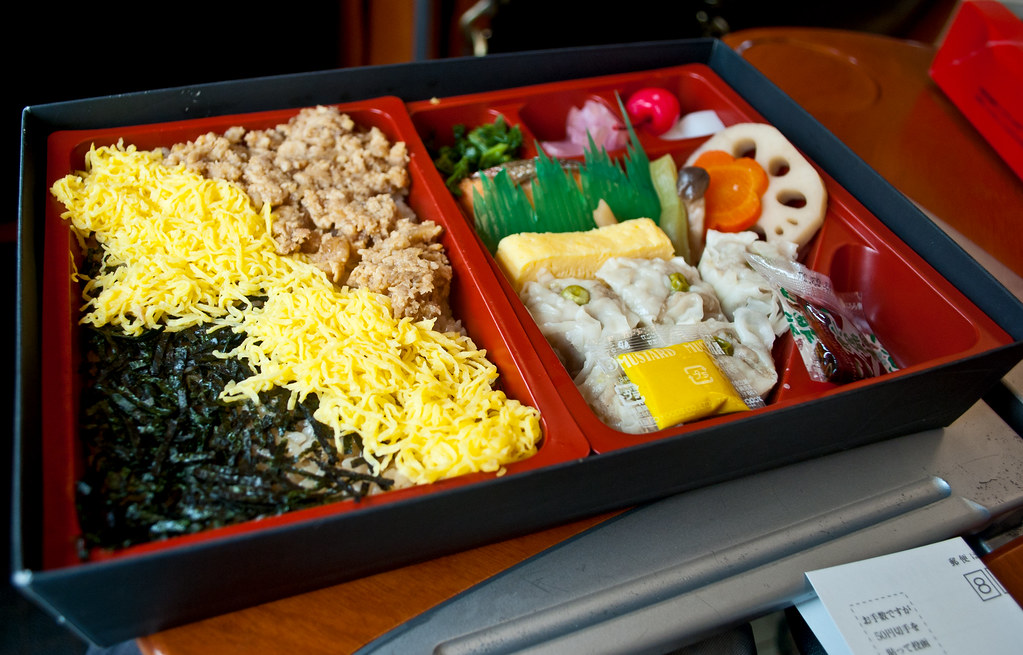Ekiben
You know a country has a hardcore food culture when great meals can be found in trains that are, in all practicality, considered public transportation. In Japan, not only are the trains clean, beautiful, and punctual, a wide variety of well made, mostly healthy, and beautiful meals are available.
On the way to Kumamoto from Hakata, we cheated and bought our ekiben, literally "train meal," at one of several kiosks within the station just before boarding. With a choice of more than 25 different lunches ranging from 400 yen to 2,000 yen ($5-25 US), I am sure to my father's chagrin, it took me 15 minutes to decide. Had we not purchased our meals there, we would have been able to on the train in the dining car or from a cart at our seat.
Staple Japanese dishes are available like chicken or beef bowls; however, the best part about traveling by train is tasting the regional specialties. Each region, large or small, has some kind of specialty whether it is an ingredient, preparation style, or container.
My father purchased a beautifully prepared Hakata meal and I picked out a Nagasaki meal. My father had considered the Nagasaki meal but deferred since he was going to travel from Hakata, where we stayed, to Nagasaki by train a few days later, when I would be traveling to Oita.
I'm not well versed in Hakata cuisine, but I recognize mentaiko, spiced cod roe, on the bottom right of his box. Hakata is also famous for their traditionally dressed ceramic dolls, so one is pictured dressed elegantly in a kimono on the cover and along the front strip of my father's box. As such, the meal is elegantly arranged and colorful...considering our meals went vertical a few times despite my best effort to keep them horizontal.
Nagasaki's culture and architecture appears different from much of Japan due to its exposure to Chinese, Portuguese, and Dutch missionaries and traders from its history as a port city. For periods of time throughout Japanese history, foreigners were restricted to the confines of Nagasaki. Nagasaki's Chinatown is more significant historically (15th century) than the Chinatown in Yokohama, near Tokyo, which is the largest Chinatown in Asia -- of course, outside of China.
My meal included shumai, a Chinese style dumpling with hot Chinese mustard, bottom right. To the left, kashiwa tori meshi -- chicken cooked in sweetened shoyu stock, egg, and nori (seaweed) over rice. The salted grilled salmon hidden behind the decorative greenery was very tasty, and matched very well with the steamed vegetables (lotus, carrot flower, mushroom, and beans).
As I generally adore Japanese tsukemono (pickled vegetables), it was to be expected that I enjoyed the pickled Japanese mustard greens and the very crunchy pink daikon slices. Even the dessert of white kanten and cherry (top right) was just right at a couple of bites.
One of my favorite train meals took place on the way to Takayama nearly 20 years ago. Simmered rice with mountain vegetables were served hot in a ceramic bowl and a bamboo cover. I continue to use this bowl! Each time I use it, I reflect upon the wonderful trip I had.
- Cassaendra
Tsubame line Shinkansen
Hakata to Kumamoto
Kyushu, Japan







0 deep thoughts:
Post a Comment